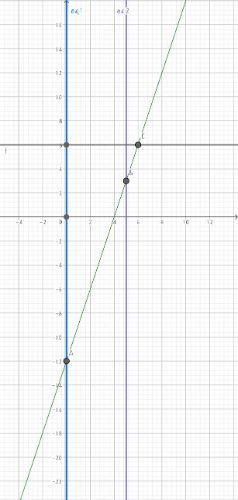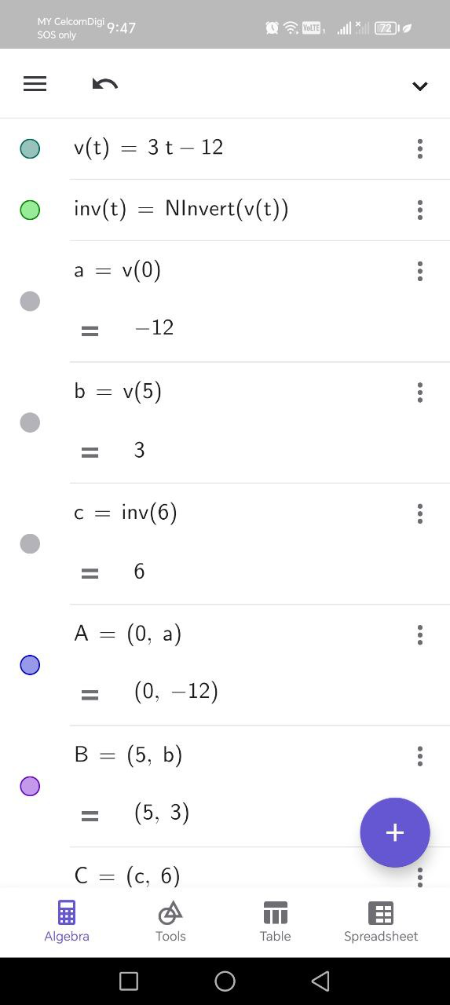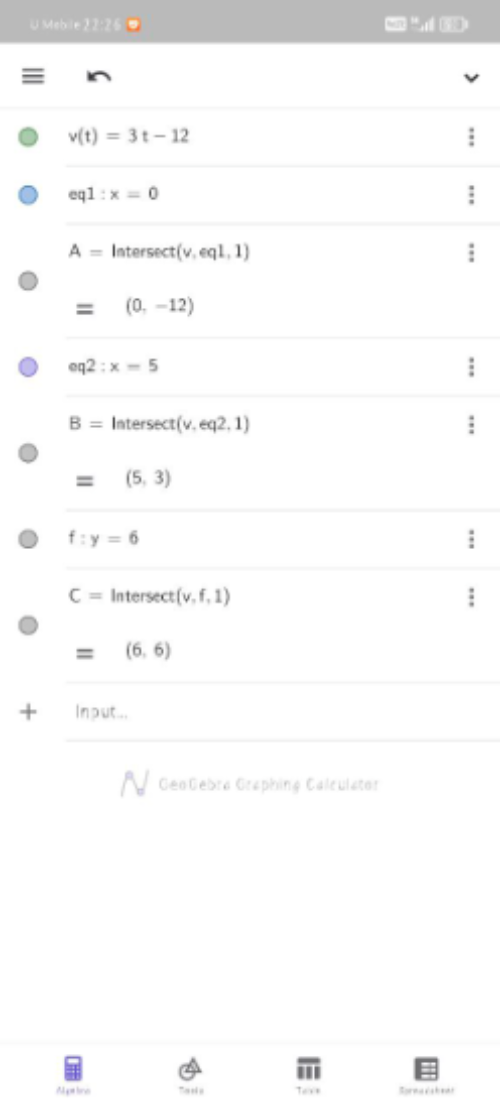
Example 3
[size=150]A particle moves along a straight line and passes through a fixed point [i]O[/i]. Its velocity, [br][i]v[/i] ms[sup]-1[/sup], [i]t[/i] seconds after passing through the point [i]O [/i]is given by [math]v=3t-12[/math].[br][br](a) Calculate[br] (i) the initial velocity of the particle,[br] (ii) the instantaneous velocity, in ms[sup]-1[/sup], of the particle when [i]t=5s, [/i][br] (iii) the time, in seconds, when the instantaneous velocity, in ms[sup]-1[/sup], of the particle is 6ms[sup]-1[/sup].[sup][br][/sup][br][br][b]Solution:[/b][/size]



(a)(i) Hence, the initial velocity of the particle is -12ms[sup]-1[/sup].[br] (ii) Hence, the instantaneous velocity of the particle when [i]t=5 [/i]is 3ms[sup]-1[/sup].[br] (iii) Hence, the time is 6 seconds when the instantaneous velocity of the particle is 6ms[sup]-1[/sup].
[size=150](b) Sketch the velocity-time graph to represent the movement of the particle for [math]0\le t\le6[/math].[/size]